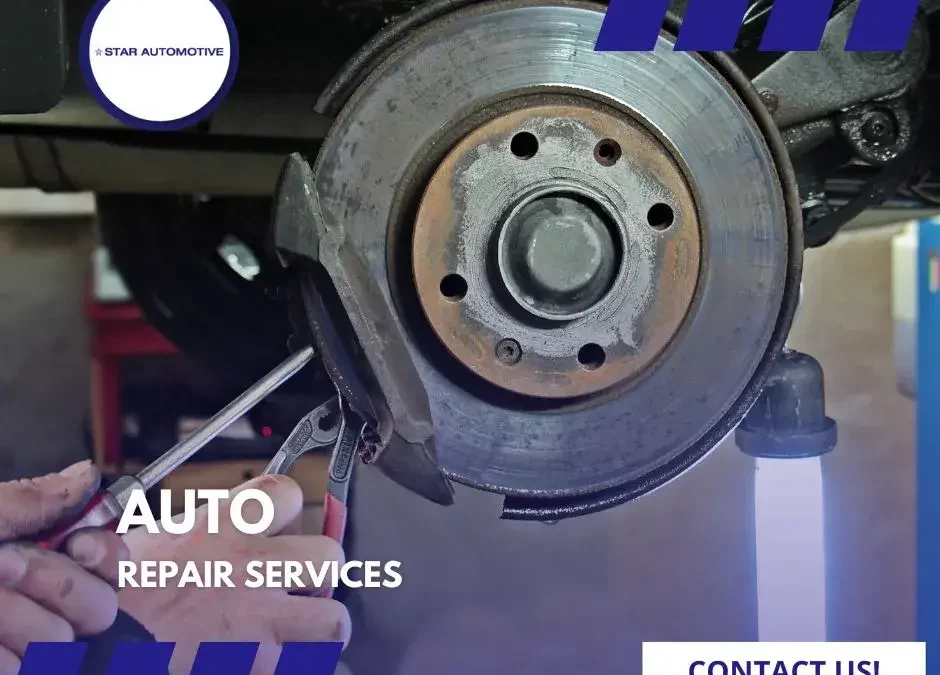
Auto Repair 101: Signs Your Car’s Brakes Are Failing
October 4, 2024
Top 5 Services Your Mechanic Recommends for a Healthy Car
October 10, 2024Auto repair experts employ a systematic approach to diagnose common brake problems, combining advanced diagnostic tools with a keen understanding of automotive mechanics. They often start with an OBD-II scanner to interpret error codes that flag potential brake system issues. Following this, specialized instruments such as micrometers and dial indicators assess the physical condition of brake components, while pressure gauges verify hydraulic integrity. By meticulously evaluating symptoms like dashboard warning lights, unusual noises, pedal feel, vibrations, and vehicle pulling, these professionals can pinpoint and address the root causes of brake malfunctions. This comprehensive methodology ensures precise and efficient resolution of brake issues.
Symptoms of Brake Issues
How can you tell if your vehicle’s brakes are on the brink of failure? Identifying symptoms of brake issues requires a keen awareness of your vehicle’s behavior and sounds. Common indicators include an illuminated brake warning light, which implies potential system malfunctions.
Squealing or grinding noises often signify worn brake pads or damaged rotors. A spongy or unresponsive brake pedal can indicate air in the brake lines or fluid leaks.
Beyond auditory and sensory signs, pay attention to vibrations or pulsations when braking, as these can be symptomatic of warped rotors. Additionally, if your vehicle pulls to one side during braking, it may suggest uneven brake pad wear or issues with the brake calipers.
An abnormal increase in stopping distance is another red flag, indicating potential brake fluid contamination or fading brake pads.
For communities that value safety and reliability, understanding these symptoms is crucial. Early detection not only prevents costly repairs but also ensures the collective safety of drivers. Recognizing these signs fosters a sense of belonging within a culture that prioritizes vehicle maintenance and road safety. Thus, awareness and timely intervention are essential for maintaining brake system integrity.
Diagnostic Tools and Techniques for Auto Repair
Recognizing the symptoms of brake issues is the first step in ensuring vehicle safety, but accurately diagnosing the problem requires specialized tools and techniques. An essential tool in the diagnostic process is the OBD-II scanner, which reads error codes from the vehicle’s computer system. These codes provide initial insights into potential issues, narrowing down the problem areas.
To gain further clarity, technicians often use a micrometer to measure brake pad thickness. This precise measurement helps determine whether the pads are within safe operating limits or require replacement.
Additionally, a dial indicator is employed to measure rotor run-out, identifying any warping that could cause vibrations or uneven braking.
Brake fluid testers are another critical tool, measuring the moisture content in the fluid. High moisture levels can lead to brake failure, making this test vital for comprehensive diagnostics.
Technicians also utilize pressure gauges to check for hydraulic system integrity, ensuring that the brake lines maintain proper pressure without leaks.
Diagnosing brake problems is akin to solving a complex puzzle, requiring precise tools and detailed analysis. Auto repair experts employ diagnostic tools such as OBD-II scanners, micrometers, dial indicators, and pressure gauges to pinpoint issues. By interpreting symptoms like warning lights, noises, pedal responsiveness, vibrations, and vehicle pulling, they systematically identify and address brake problems. This meticulous approach ensures the safety and reliability of the vehicle’s brake system, reflecting a blend of technical skill and analytical acumen.




